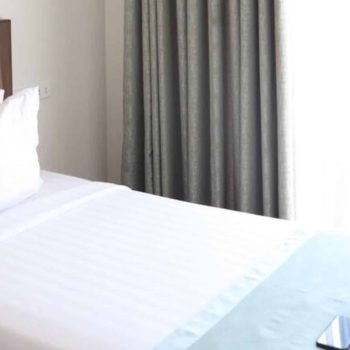Learn About Turning Someone In A Hospital Bed
How Many Times Should Someone Confined To A Hospital Bed Be Turned?
The accepted guideline is turning the patient every two hours; however, there’s more to finding the right solution for their specific needs. Some people can lie down for a long time without developing pressure ulcers, while others must be placed in a different position more often.
A physician can individualize the frequency of turns based on such factors as:
- The general medical condition of the patient
- Their level of activity and mobility
- Tissue tolerance
Research has not yet determined how often someone should change position to get the best preventive effect. Doctors should regularly monitor the patient and offer them and their family advice to reduce the risk of bedsores. If the bedridden patient can move independently in the bed, caregivers can encourage them to reposition themselves into sitting positions or engage in light exercise.
Meeting A Patient's Needs By Selecting The Right Hospital Bed
Hospital beds are the ideal resting surfaces for preventing bedsores. When a patient is discharged to their home or living facility, they should have the proper bed for their resting needs.
Pressure-relieving mattresses and support surfaces can lower the risk of skin issues, potentially reducing the need to turn patients over frequently. They distribute the pressure more evenly across the surface, eliminating friction and shearing that can lead to the development of bedsores.
Hospital beds also have features that make it easier for in-home caregivers to help a bedridden patient turn over. These beds can lower closer to the floor, accommodating the health care worker who may need more leverage when turning the patient over.
The adjustability of a hospital bed can also offer much-needed support for the patient’s feet. The elevation can improve the circulation and mobility of the patient, aiding the healing process and preventing the development of further bedsores from developing. If a patient suffers from pressure sores on the feet, legs, or bottom, they can raise the foot end to prevent sliding down in bed.
Depending on the condition, an electric hospital bed can let the patient change position and move as much as they want on their own, all with the touch of a button. Rather than relying on a caregiver to move the patient, they may use a hand controller to adjust the position.
The Drawbacks Of Turning A Patient Too Often
It’s essential that families ask and listen to a doctor’s directions related to turning the patient, as moving them too often can have disadvantages. Repositioning every two hours during the night could wake the patient every time, preventing them from getting much-needed sleep. Changing position can also be painful for patients with wounds or joint conditions.
Frequent repositioning is physically demanding for home care workers or family members. Doctors and healthcare workers need to observe how often someone’s position needs shifting, noting every time a repositioning is required.
What Are Bed Sores Anyways?
Bedsores develop when a person is bedridden or otherwise immobile, unconscious, or unable to sense pain. They are ulcers that occur when the skin is under pressure from lying in bed, sitting in a wheelchair, or wearing a cast for a prolonged time. If a caregiver does not turn an immobile or person confined to their bed into the correct position when it’s needed or provide proper nutrition and skincare, the patient can develop bedsores.
Bedsores are a serious problem among older patients and seniors with mobility issues, and their formation is related to the quality of care the person receives. Patients and seniors with diabetes, circulation problems and poor nutrition are at higher risk of developing them. These sores can take a long time – even years – to heal, with the risk of becoming infected and causing illnesses. A multi-function hospital bed with a pressure redistribution mattress can be a great tool for patients and caregivers to decrease the risk of pressure ulcers.
Frequently Asked Questions Bed Sores In Hospital Beds
Always consult your doctor or care provider first. If you are confined to your bed, you should switch positions at least every 2 hours. If you are confined to a chair, you should adjust yourself at least each hour, preferably every 15 minutes.
Turning is the process of rotating a hospital patient or a bedridden nursing care patient in order to alleviate weight on one region of the body. Shifting can help to restore normal blood flow to a region, keeping skin tissues fresh and alive and successfully reducing bed sores.








